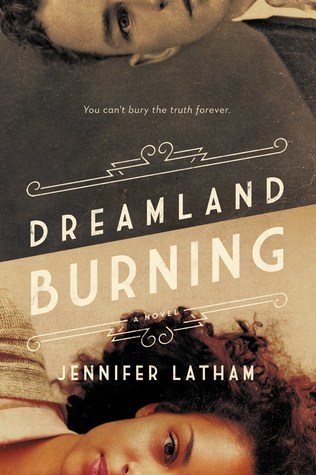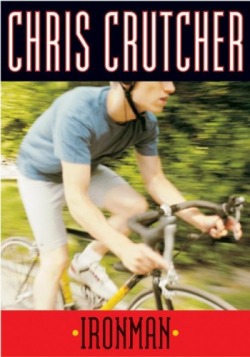Orchard,
Eric (2016) Bera the One-Headed Troll New
York: First Second.
Opening Panels:

I teach in a college where our
mascot is the Troll. We are the only
college with such a mascot in North America.
So I am a little defensive when it comes to trolls who generally get a
bad rap. Not so in this graphic novel. Bera
is a kind and compassionate troll and when a baby appears in a tiny boat on the
edge of her island, she saves it from the sirens. Before long she sets out on a journey to
return the baby to its people, and she must elude a witch, a giant, and many
other obstacles to keep the baby safe.
Not only is this a fun book for
third grade and up, it also teaches kids to be careful who they trust At several points, Bera things she has found
someone who will care for the baby as she does.
In several of those cases, she is wrong.
But Bera is a good troll. A fine example of what a troll should
be. Trinity alumni in particular may
want to pick this one up.
Weing, Drew (2016) The Creepy Case Files of Margo Maloo. New York: First Second.
Opening Lines:

Charles is a small bookish kid who is always writing things in his notebook. He wants to be a reporter someday, and so when his family moves to the big city, Charles begins writing a blog. He views the city as a dangerous place, with high crime rates and danger of being mugged lurking around every corner. When he discovers that he actually has a monster in his closet, he is even more scared. Eventually a kid he meets gives him a card that says Margo Maloo, Monster Mediator. He calls the number and Margo arrives through hi bedroom window, finds an old access panel in the back of his closet, and leads him down a shaft where she finds the Troll that has been living in Charles’s basement. The troll (whose name is Marcus) was trying to scare away Charles’s family because he was afraid they would mess with his stuffed animal collection. Soon Charles and the troll are getting along pretty well.
As the story goes on, Charles starts going along on Margo’s missions, sort of as her sidekick. It becomes apparent that she really is a mediator, solving conflicts by getting the two sides to talk together and works something out. There are still plenty of challenges and dangerous situations though, and Charles begins to learn that the city is not a place he should be scared of, but is in fact fascination, both in terms of the human community and the monster community.
Bottom line, this book is a lot of fun. Ideal for third grade and up. I suppose some parents might object to a book with monsters in it, but if they read the book, I think they would change their minds.
Knisley, Lucy (2016) Something New: Tales from a Makeshift Bride. New York: First Second.

Opening lines: "Of all the unfamiliar roles in which I have found myself as an adult, this has been one of the strangest. Despite hundreds of years of traditions and expectations, familiar rituals and ancient promises... A year ago I couldn't have even imagined myself as a bride."
Lucy Knisley writes really interesting memoirs in graphic novel form. Her previous graphic novel, Relish, looked at her life in terms of food. This book looks at how difficult it is to fight societal expectations and family expectations and make your wedding your own. She manages though, and gets her wedding dress with pockets, her (relatively simple) wedding, and all without permanently alienating her mom, fiance, friends, or anyone else. Along the way we find out the story of her relationship with John, her struggles with dating, and plenty of self-deprecating stories that make us smile.
There are interesting themes here including the importance of thinking critically about sociatal traditions before buying into them, how marriage is based on more than perfect appearance, and how humor can diffuse tension among others.
This book would be good for high school and up, though teachers should be aware that Knisley references some same-sex dating that she did along the way and occasionally mentioned her support of same-sex marriage. This is not a major part of the book and would likely not even raise an eyebrow of the average high school student, but parents may be cautious or offended.
Hale, Shannon; Pham, LeUyen (2017) Real Friends: A True Story about Cool Kids and Crybabies New York: First Second.

Opening Line: “When I was little, I didn’t worry about friends.”
When Shannon goes to kindergarten she meets Adrienne and they become best friends. But when Adrienne moves away, Shannon is alone. She meets Tammy, but it isn’t the same. Adrienne moves back, but befriends Jan, who is cool. And at that point, Shannon starts down the difficult road of trying to find and maintain friends in the difficult world of elementary school.
This is a remarkably honest book and the reader shares in Shannon’s triumphs and sorrows. Pham’s illustrations use amazingly evocative facial expression to let the reader get inside the heads of Shannon and her friends (and enemies). We also get to see what Shannon dreams of, including the stories of castles and knights she envisions writing some day, the scenarios he is pretending in her mind when she plays with her friends, and the image of Jesus comforting her when no one else will.
This would be an excellent book for third graders and up, particularly in teaching social skills and providing comfort for kids who are stuck on the outside of friends groups they wish they were in. It is certainly directed at a female audience. There is nothing here that could cause any objection that I can see. I am guessing every teacher can think of at least one kid who needs this book.










